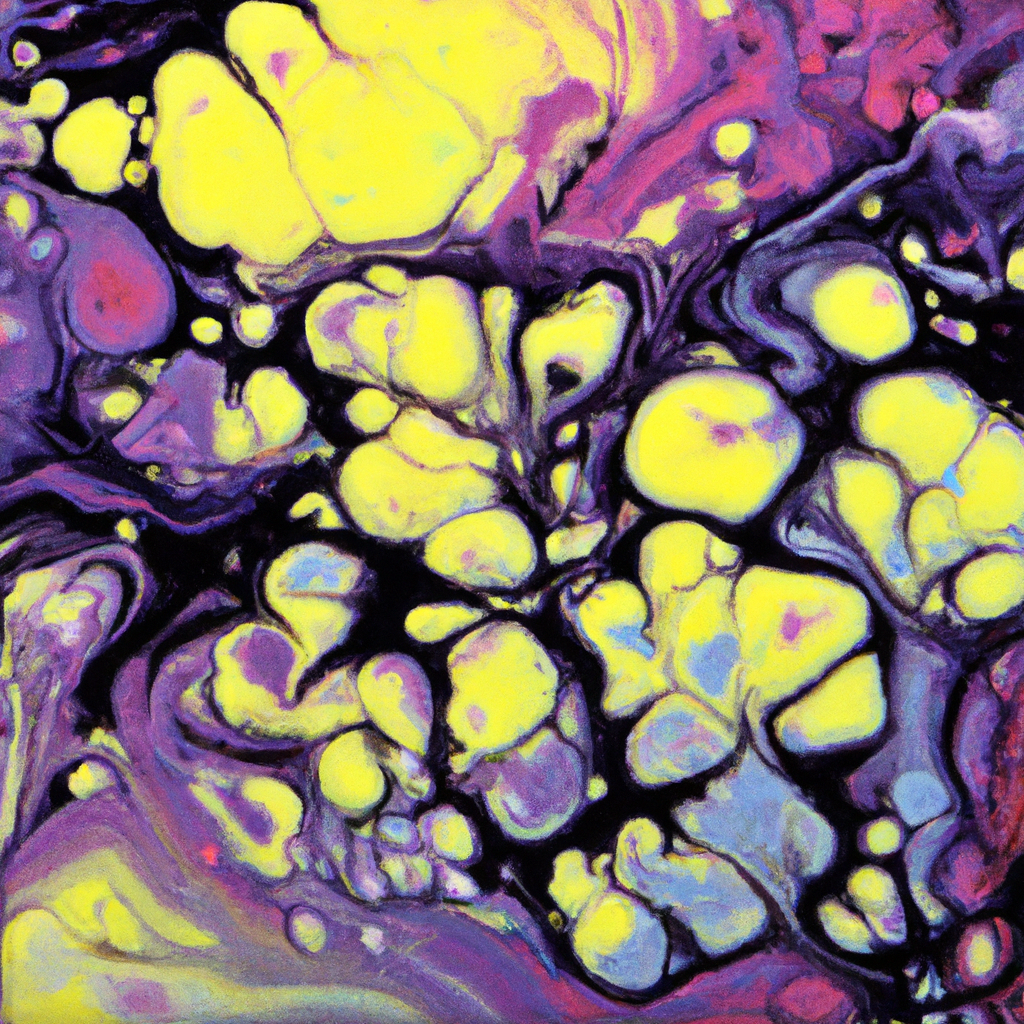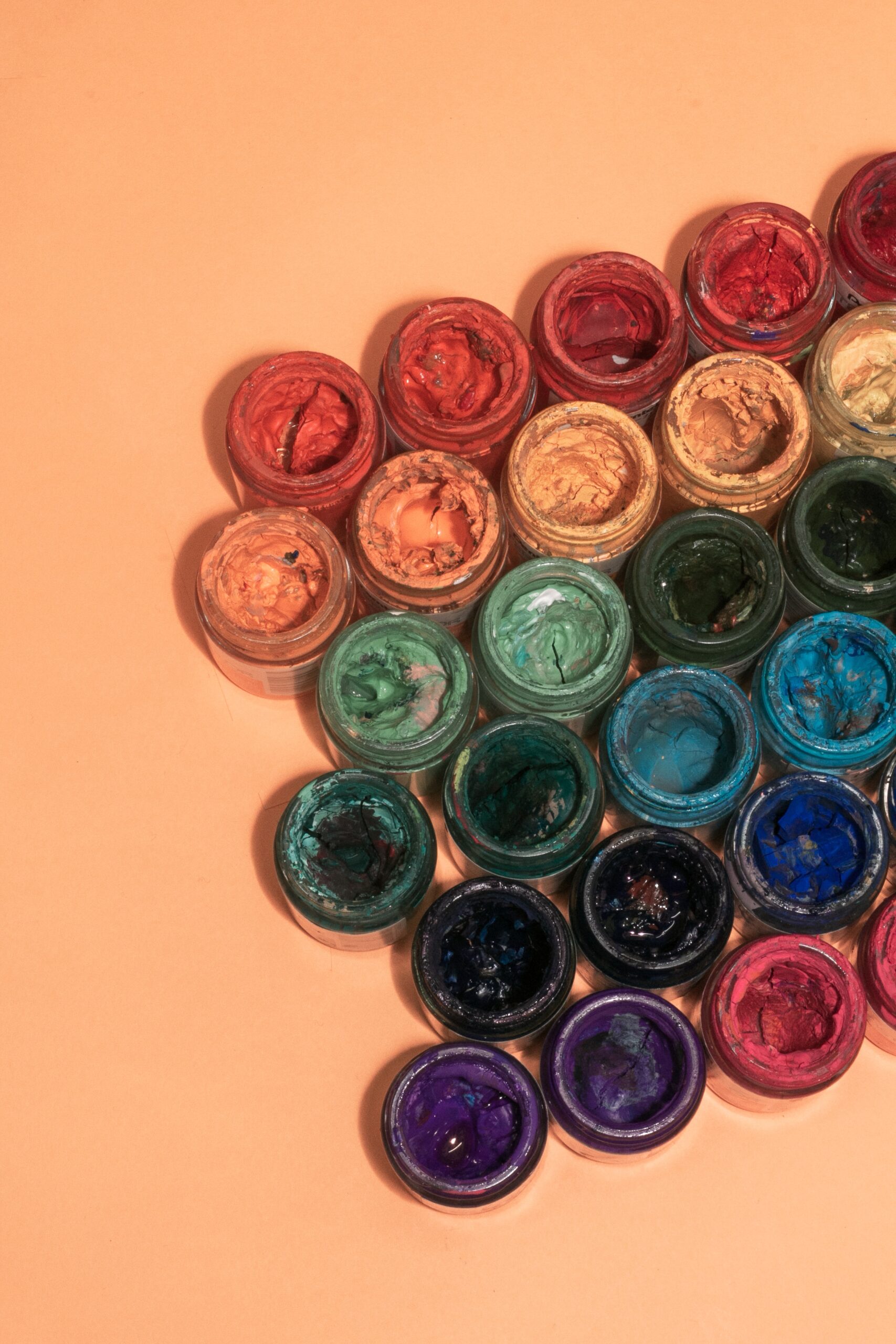Acrylic paint has long been a favorite among artists for its vibrant colors and versatility. But when it comes to using this beloved medium on polymer clay, the question arises: can you use acrylic paint on polymer clay? This article explores the compatibility of these two materials and offers insights on the best practices for achieving stunning results. Whether you’re an experienced artist or a curious beginner, this article will provide you with the knowledge you need to create beautiful and durable artwork using acrylic paint on polymer clay.

What is Polymer Clay?
Definition of Polymer Clay
Polymer clay is a versatile modeling medium that is made up of a polymer base combined with a plasticizer and other additives. It is commonly used by artists, hobbyists, and crafters to create various sculptures, jewelry, and decorative items. Unlike traditional clay, polymer clay is not naturally occurring and requires baking in order to cure and harden.
Composition of Polymer Clay
Polymer clay consists of a PVC (polyvinyl chloride) base, which provides the main structure. To make it more pliable and workable, a plasticizer is added, typically a liquid phthalate. Other additives such as fillers, lubricants, and pigments are also incorporated to enhance its properties and colors.
Properties and Characteristics of Polymer Clay
Polymer clay has several unique properties that make it a popular choice for artists. First, it has a non-drying formula, which means that it remains soft and workable until it is baked. This allows artists to take their time and make intricate details without the worry of it drying out. Additionally, polymer clay is available in a wide range of vibrant colors and can be easily blended to create custom shades. It is also lightweight, durable, and has excellent flexibility when cured.
What is Acrylic Paint?
Definition of Acrylic Paint
Acrylic paint is a water-based paint that is known for its quick drying time and versatility. It is made by suspending pigments in an acrylic polymer emulsion, resulting in a fast-drying and water-resistant paint. acrylic paint can be used on various surfaces such as canvas, paper, wood, and even polymer clay.
Composition of Acrylic Paint
Acrylic paint consists of pigment particles that are suspended in an acrylic polymer emulsion, which serves as the binder. The emulsion is a mixture of acrylic polymer particles dispersed in water. This composition allows the paint to dry quickly and form a durable, flexible film once it has cured.
Properties and Characteristics of Acrylic Paint
Acrylic paint offers a range of properties that make it popular among artists. Firstly, it is known for its vibrant and intense colors, which can be easily mixed and diluted to achieve different shades and effects. Additionally, acrylic paint dries quickly, allowing artists to build multiple layers and work efficiently. Once dried, it forms a water-resistant and flexible film that is resistant to cracking and fading over time.
Compatibility of Acrylic Paint and Polymer Clay
Adherence of Acrylic Paint to Polymer Clay
acrylic paint adheres well to polymer clay surfaces due to its ability to form a strong bond with various materials. When applied correctly, acrylic paint can adhere to the cured surface of polymer clay without chipping or peeling off easily.
Effect of Acrylic Paint on Polymer Clay
Acrylic paint can enhance the appearance of polymer clay by adding color, depth, and texture. It can be used to create beautiful designs and details on polymer clay sculptures or jewelry. The paint can also be used to achieve various effects such as shading, highlighting, and gradation.
Longevity of Acrylic Paint on Polymer Clay
When properly sealed and handled, acrylic paint can have good longevity on polymer clay projects. Sealing the paint helps to protect it from wear and tear, as well as from exposure to moisture and UV light. However, it is important to note that the longevity of the paint will also depend on the quality of the paint, the application technique, and the specific conditions in which the polymer clay piece is displayed or used.
Preparation and Application of Acrylic Paint on Polymer Clay
Surface Preparation of Polymer Clay
Before applying acrylic paint on polymer clay, it is important to ensure that the surface is clean and free from any dirt, dust, or oils. This can be done by gently wiping the surface with a soft cloth or using a mild soap and water solution. Once the surface is dry, it is ready to be painted.
Choosing the Right Type of Acrylic Paint
When selecting acrylic paint for polymer clay, it is best to choose paints that are specifically formulated for use on various surfaces, including polymer clay. These paints are often labeled as “multi-surface” or “all-purpose” acrylic paints. They adhere well to polymer clay and offer good color vibrancy and durability.
Applying Acrylic Paint on Polymer Clay
to apply acrylic paint on polymer clay, various techniques can be used such as brushing, stippling, sponging, or even airbrushing. It is important to apply thin layers of paint and allow each layer to dry before applying the next. This helps to prevent the paint from cracking or peeling off. Building up multiple layers gradually ensures a more even and professional-looking finish.

Sealing Acrylic Paint on Polymer Clay
Importance of Sealing
Sealing acrylic paint on polymer clay is essential to protect the paint from scratches, moisture, and UV light. It also helps to enhance the longevity of the paint and maintain its vibrant colors over time. Sealing also provides a smooth and glossy finish to the polymer clay piece.
Types of Sealers for Polymer Clay
There are several types of sealers that can be used to seal acrylic paint on polymer clay. The most commonly used sealers include gloss varnishes, satin varnishes, and matte varnishes. These varnishes can be water-based or solvent-based depending on personal preference. It is important to choose a sealer that is compatible with both acrylic paint and polymer clay.
Applying the Sealer
To apply the sealer, it is recommended to use a soft brush or a sponge brush. Apply thin and even coats of sealer, allowing each layer to dry before applying the next. It is important to follow the manufacturer’s instructions regarding drying time and the number of coats required for optimal results. Once the sealer has fully dried, the polymer clay piece is ready to be enjoyed and showcased.
Tips and Techniques for Using Acrylic Paint on Polymer Clay
Mixing Colors
acrylic paint allows artists to mix various colors to create custom shades. When mixing acrylic paint on polymer clay, it is best to start with small amounts to achieve the desired color. Gradually add more paint until the desired shade is achieved. Mixing on a palette or a clean surface allows for better control and prevents color contamination.
Creating Texture
Acrylic paint can be used to create interesting textures on polymer clay. Different techniques such as dry brushing, stippling, or sponging can be employed to achieve texture effects. Experimenting with different tools and brushes can help to create unique textures and patterns on the polymer clay surface.
Adding Details
Acrylic paint is an excellent medium for adding intricate details to polymer clay projects. Fine brushes or even toothpicks can be used to add lines, dots, or small designs. It is important to have a steady hand and take your time when adding details to ensure precision and accuracy.
Using Multiple Layers
Building up multiple layers of acrylic paint on polymer clay can create depth and dimension in the artwork. Each layer adds more richness to the colors and allows for greater control over the final result. It is important to allow each layer to dry before applying the next to prevent the paint from smudging or blending.

Common Problems and Solutions
Cracking or Peeling of Acrylic Paint
If acrylic paint on polymer clay cracks or peels, it may be due to improper surface preparation or the use of incompatible materials. To avoid this issue, ensure that the polymer clay surface is clean and dry before painting. Additionally, use acrylic paint that is specifically formulated for multi-surface applications and compatible with polymer clay. Applying a sealer on top of the paint can also help to prevent cracking or peeling.
Color Bleeding
Color bleeding can occur when the paint spreads or smears onto adjacent areas. To prevent color bleeding, it is important to apply thin layers of acrylic paint and allow each layer to dry completely before applying the next. Using a clean brush for each color and avoiding excessive water or moisture during the painting process can also help to minimize color bleeding.
Fading or Discoloration
Over time, acrylic paint may fade or discolor if exposed to direct sunlight or harsh environmental conditions. To prevent fading or discoloration, it is recommended to use high-quality acrylic paints that are lightfast and resistant to fading. Additionally, sealing the paint with a UV-resistant varnish can help to protect the colors and maintain their vibrancy.
Alternatives to Acrylic Paint on Polymer Clay
Other Types of Paints
While acrylic paint is commonly used on polymer clay, there are other types of paints that can be used as alternatives. Oil-based paints, alcohol inks, and enamel paints are some of the options available. Each type of paint has its own unique properties and effects, so it is important to experiment and find the one that works best for your desired outcome.
Inks and Stains
Inks and stains can also be used to color polymer clay. Alcohol inks and water-based stains are popular choices as they offer vibrant colors and can be easily applied. These types of coloring agents can be used in conjunction with or as an alternative to acrylic paint, depending on the desired effects.
Dyes and Pigments
Another alternative to acrylic paint on polymer clay is the use of dyes or pigments. Dyes can be mixed with a clear liquid medium to create a colorful translucent effect, while pigments can provide opaque color coverage. Both options allow for customization and experimentation with different color combinations.

Safety Considerations
Ventilation
When working with acrylic paint and polymer clay, it is important to ensure proper ventilation in the workspace. Acrylic paint and some types of polymer clay emit fumes, which can be harmful when inhaled. Working in a well-ventilated area or using a ventilation system can help to minimize exposure to these fumes.
Skin Protection
To protect your skin from potential irritation, it is advisable to wear gloves when handling polymer clay and using acrylic paint. Some people may develop sensitivities or allergies to the materials, so taking precautions can help to prevent any skin reactions.
Safe Handling and Storage of Paints and Clay
proper storage and handling of acrylic paint and polymer clay are important for maintaining their quality and safety. Ensure that the paint tubes or bottles are tightly sealed when not in use to prevent evaporation and drying out. Store the paints and clay in a cool, dry place away from direct sunlight or extreme temperatures. It is also crucial to follow the manufacturer’s instructions regarding disposal of any unused or expired paints or clay.
Conclusion
Summary of Findings
In summary, acrylic paint can be successfully used on polymer clay to add color and enhance its appearance. When properly prepared, applied, and sealed, acrylic paint can adhere well to polymer clay and provide excellent longevity. Various techniques and tips can be employed to achieve desired effects and minimize common problems.
Final Thoughts
Using acrylic paint on polymer clay opens up a world of creative possibilities. Whether you are a professional artist or a hobbyist, the combination of these two mediums allows for endless opportunities to express your creativity and create unique pieces of art. By following proper techniques, handling with care, and considering safety measures, you can confidently explore the vibrant world of acrylic paint on polymer clay.




